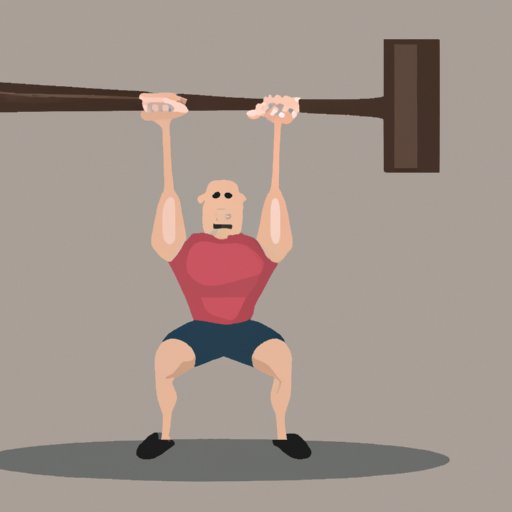
Introduction
Hammer curls are a popular exercise for building arm strength and muscle. They target the biceps, forearms, and wrist extensors, making them an essential part of any upper body workout routine. This article will provide you with a step-by-step guide on how to perform hammer curls, common mistakes to avoid, the benefits of the exercise, variations and modifications, a video tutorial, and a comparison to other similar exercises.
Step-by-Step Guide to Hammer Curls
Before beginning any exercise, it’s important to warm up to prevent injury. Start with a light cardio exercise, such as jumping jacks or running in place, for five minutes.
1. Stand with your feet shoulder-width apart and hold a dumbbell in each hand, palms facing your body.
2. Keep your elbows close to your sides and your shoulders relaxed.
3. Slowly lift the dumbbells towards your chest, keeping your palms facing each other.
4. Hold for a second at the top of the curl, then lower the weights back down to the starting position.
5. Repeat for 10-12 reps for three sets.
Remember to engage your biceps and forearms throughout the exercise and avoid swinging the weights or arching your back.
Common Mistakes When Performing Hammer Curls
The most common mistake when performing hammer curls is using momentum or swinging the weights to lift them. This can limit the effectiveness of the exercise and also increase your risk of injury. Other mistakes include arching the back, lifting the weights too quickly, and using too heavy of a weight.
To fix these mistakes, focus on using slow and controlled movements, keeping your back straight, and using a weight that allows you to complete at least 10-12 reps with proper form.
Benefits of Hammer Curls
Hammer curls are a great exercise for building strength and muscle in the biceps, forearms, and wrist extensors. They also improve grip strength and can help with everyday tasks, such as carrying grocery bags or lifting heavy objects. Additionally, studies have shown that incorporating hammer curls into your workout routine can lead to increased upper body strength and decreased risk of injury.
Variations and Modifications of Hammer Curls
There are several variations and modifications of hammer curls that you can incorporate into your workout routine. One option is to use heavier weights for fewer reps to increase muscle mass. Another is to use lighter weights and perform more reps to improve endurance. Additionally, you can change your grip, such as using an angled or narrow grip, to target different muscles.
It is important to remember to still use proper technique and form during these variations to prevent injury or strain.
Video Tutorial of Hammer Curls
To help you see proper form in action, here is a video tutorial of hammer curls:
During the tutorial, the instructor emphasizes the importance of keeping your elbows close to your sides and not swinging the weights. He also demonstrates the variation of a hammer curl with a narrow grip. At the end of the video, he answers frequently asked questions about proper form and technique.
Comparison of Hammer Curls to Other Exercises
Compared to bicep curls, hammer curls target a wider range of muscles, including the forearms and wrist extensors. Additionally, hammer curls improve grip strength, making them beneficial for athletes who use their hands frequently. However, bicep curls can isolate the biceps more and are better for building muscle mass.
Compared to chin-ups or pull-ups, hammer curls are less intense and can be performed with less equipment. However, chin-ups and pull-ups target a wider range of muscles, including the back and shoulders.
Conclusion
Hammer curls are an essential exercise for building arm strength and muscle. By following this guide’s step-by-step instructions, avoiding common mistakes, and incorporating variations and modifications, you can maximize the benefits of this exercise. Remember to always use proper technique and form to prevent injury and empower yourself to incorporate this exercise into your regular workout routine.





